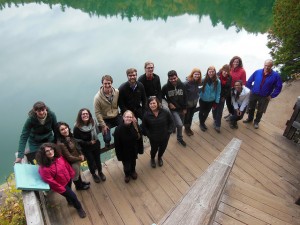 For our 3rd workshop, it was time to head to the eastern node of the MAGNET network, where a large proportion of MAGNET trainees, faculty and laboratories are located. This year’s workshop took place in Ontario and Quebec from October 3-9, 2015 and involved 17 trainees from the University of Ottawa, University of Toronto, McGill University, Université du Québec à Chicoutimi and the University of British Columbia. We kicked off the workshop on Sunday morning with a welcome brunch at a local restaurant in Ottawa, followed by an exhilarating icebreaker activity: 4 hours of ziplining and treetop adventures at Parc Lafleche. It was a great way to break the ice and get to know each other, while overcoming fears at the same time!
For our 3rd workshop, it was time to head to the eastern node of the MAGNET network, where a large proportion of MAGNET trainees, faculty and laboratories are located. This year’s workshop took place in Ontario and Quebec from October 3-9, 2015 and involved 17 trainees from the University of Ottawa, University of Toronto, McGill University, Université du Québec à Chicoutimi and the University of British Columbia. We kicked off the workshop on Sunday morning with a welcome brunch at a local restaurant in Ottawa, followed by an exhilarating icebreaker activity: 4 hours of ziplining and treetop adventures at Parc Lafleche. It was a great way to break the ice and get to know each other, while overcoming fears at the same time!
The next two days were mainly spent at the Advanced Research Complex of the University of Ottawa and were dedicated to a well-balanced mix of professional development and lab tours, plus local excursions. Trainees were given seminars on Management & Working in Industry (Geofirma), Ethics (Association of Professional Geoscientists of Ontario), Policy: Canada’s Space Mining Potential (Natural Resources Canada), Science Communications & Outreach (University of Ottawa), and Scientific Writing & Publishing (University of Ottawa Altitude Program). Trainees got to visit the radiocarbon, radiohalides, tritium and noble gas laboratories. A special highlight was the tour of the A.E. Lalonde AMS laboratory, which houses a custom-built 3 MV tandem accelerator mass spectrometer – the only one of its kind in Canada. In the afternoons, we escaped to the great outdoors with trips to Gatineau Park (Pink Lake & Champlain Lookout), Wallingford-Back Mine (once the largest feldspar and quartz mine in North America) and a sand/gravel quarry.
“There was a good mixture of topics covered, and all the trainees participated actively in the activities and discussions.”
On Wednesday we packed up the vans for a full day in the field. Our first stop was Caverne Lafleche, where we spent 2 hours exploring an underground cave system with deep, dark passages carved by glacial meltwater from the Laurentide Ice Sheet. After a nice picnic lunch, the trainees studied outcrops along the “Miracle Mile” – a diverse range of mid-crustal exposures related to the Grenville Orogeny. The unique mineralogy included gorgeous green apatite, big books of phlogopite, and a blue, bladed mineral called riebeckite, all of which made for some nice souvenirs. That night we stayed at Ogilvie Lake Cabins in Chalk River, where trainees were treated to a delicious dinner, followed by board games and a bonfire, complete with roasted marshmallows.
“The visit to the mines and outcrops and the cave were a great experience. The field excursions were most beneficial to me because these were things I would not be able to see and learn about anywhere else.”
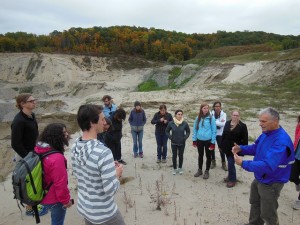 On Thursday we spent the day at the Chalk River Laboratories, a nuclear research facility, and the highlight of the workshop. We began with a series of presentations on Canada’s nuclear history, the geology and hydrology of the area, and some monitoring and remediation strategies given by their communications officer, senior geologist and an environmental scientist. We then went to Waste Management Area B, where they study, test and monitor historical burials of nuclear waste. We also visited the “Wall & Curtain,” a permeable reactive barrier built to contain a plume of Sr-90 contaminated groundwater. The trainees were impressed by the simplicity of this passive remediation system, where the flow of the plume though zeolite absorbs the Sr and makes the water safe enough to drink. After lunch we split into two groups for a tour of the nuclear reactor. One group focused on the use of neutron beams for materials testing, while the other group learned about the production of medical isotopes to diagnose and treat diseases (e.g., Co-60 for cancer). The last part of the day involved visiting a site with accumulations of bacteriogenic iron oxides that have the capacity to sorb heavy metals.
On Thursday we spent the day at the Chalk River Laboratories, a nuclear research facility, and the highlight of the workshop. We began with a series of presentations on Canada’s nuclear history, the geology and hydrology of the area, and some monitoring and remediation strategies given by their communications officer, senior geologist and an environmental scientist. We then went to Waste Management Area B, where they study, test and monitor historical burials of nuclear waste. We also visited the “Wall & Curtain,” a permeable reactive barrier built to contain a plume of Sr-90 contaminated groundwater. The trainees were impressed by the simplicity of this passive remediation system, where the flow of the plume though zeolite absorbs the Sr and makes the water safe enough to drink. After lunch we split into two groups for a tour of the nuclear reactor. One group focused on the use of neutron beams for materials testing, while the other group learned about the production of medical isotopes to diagnose and treat diseases (e.g., Co-60 for cancer). The last part of the day involved visiting a site with accumulations of bacteriogenic iron oxides that have the capacity to sorb heavy metals.
“The most eye-opening was the visit to the CNL, where I learned a lot about industry careers, environmental applications and hydrogeological applications to geochemistry.”
The next day it was time to head back to Ottawa, where the trainees enjoyed a bit of free time to explore the nation’s capital before heading off in separate directions. Once again, the MAGNET workshop was a success, thanks to the excellent organization and the motivated and enthusiastic participants. Until next year!
Related Links:
Photo album: https://www.flickr.com/gp/135483803@N04/ZXK1wy
Student blog: http://geoarchaeo.com/2015/11/19/magnet-field-trip-and-workshop-2015-ottawa/





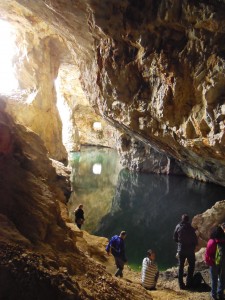
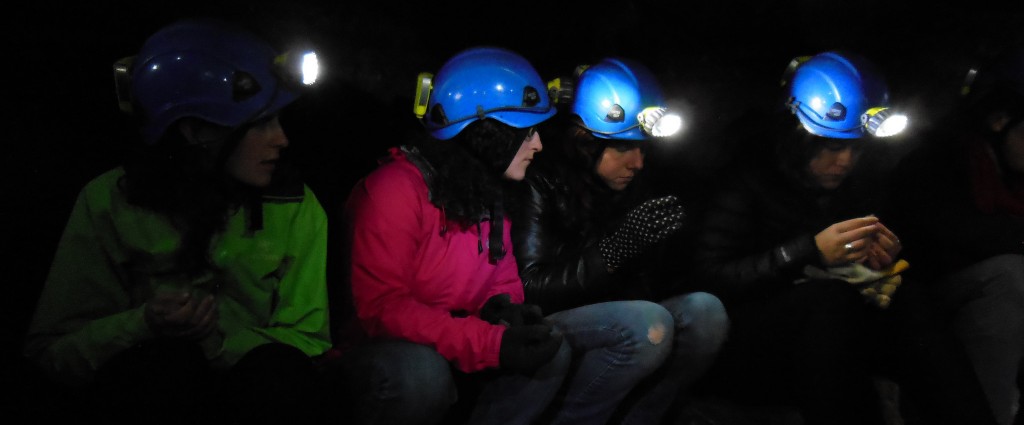
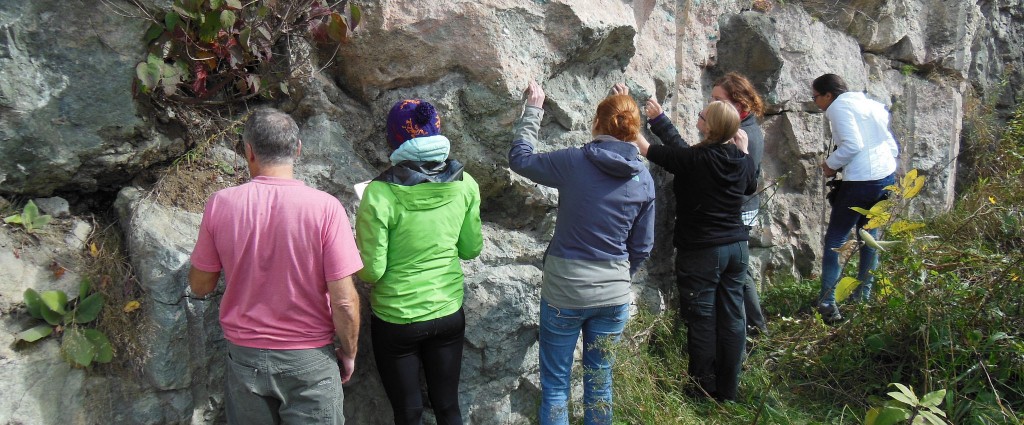
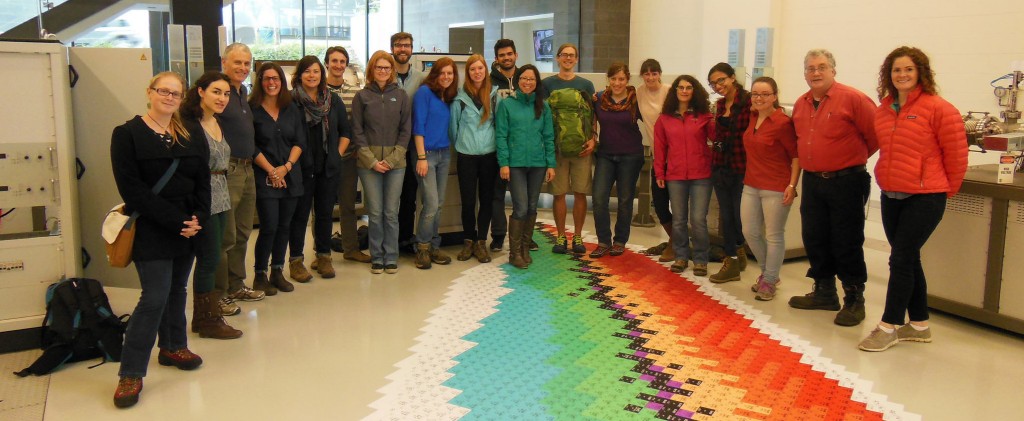
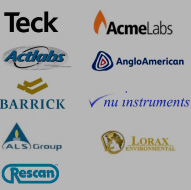


 Site by Sprout Creative
Site by Sprout Creative